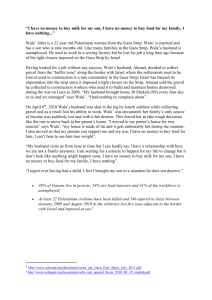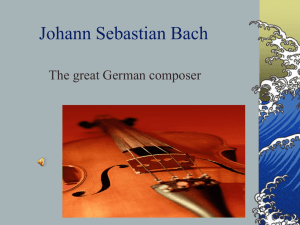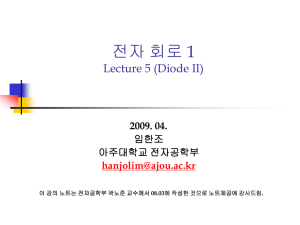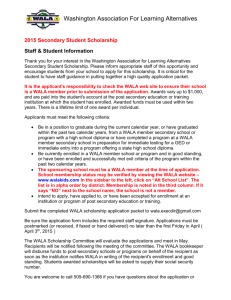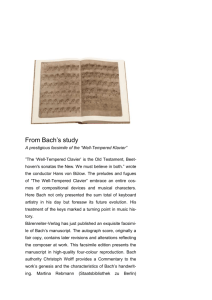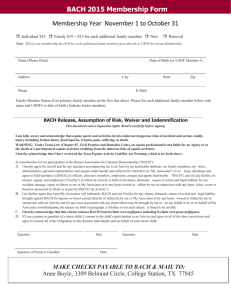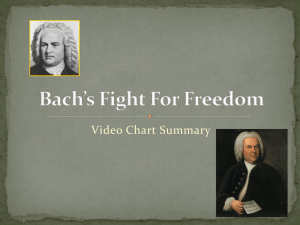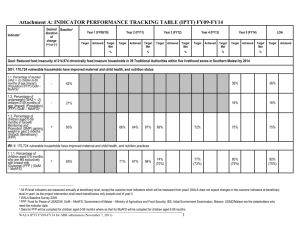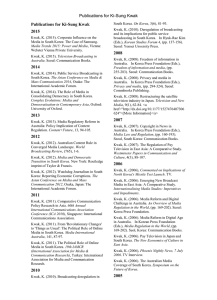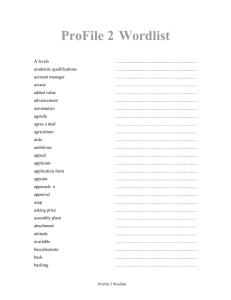Emmon Bach Memorial Symposium
advertisement
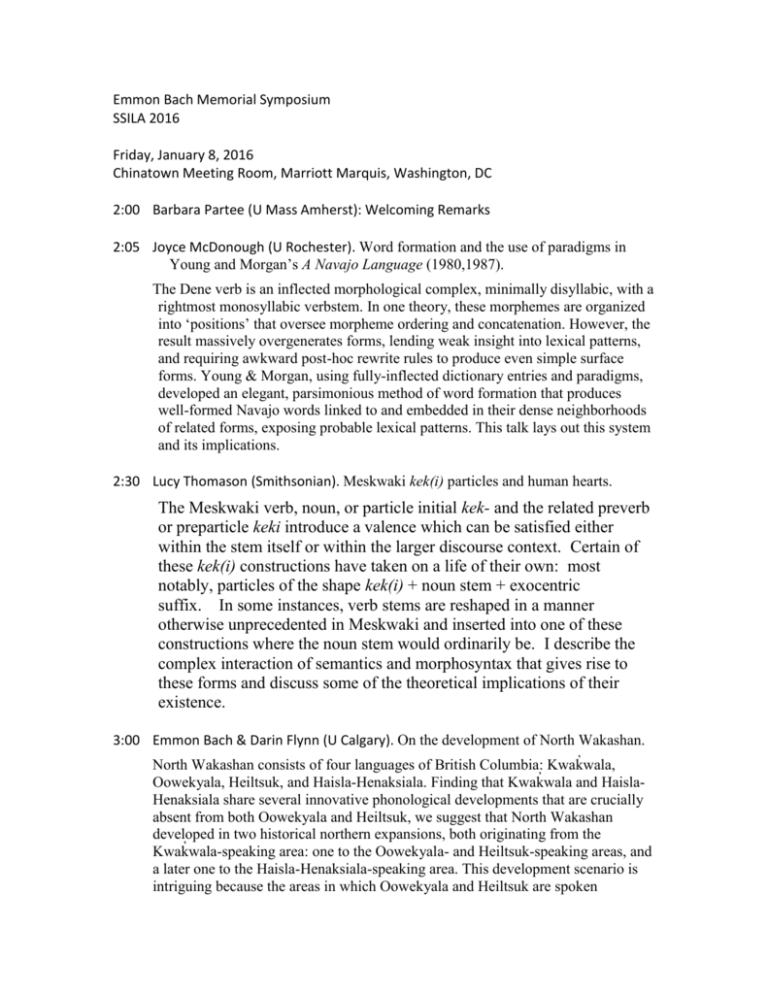
Emmon Bach Memorial Symposium SSILA 2016 Friday, January 8, 2016 Chinatown Meeting Room, Marriott Marquis, Washington, DC 2:00 Barbara Partee (U Mass Amherst): Welcoming Remarks 2:05 Joyce McDonough (U Rochester). Word formation and the use of paradigms in Young and Morgan’s A Navajo Language (1980,1987). The Dene verb is an inflected morphological complex, minimally disyllabic, with a rightmost monosyllabic verbstem. In one theory, these morphemes are organized into ‘positions’ that oversee morpheme ordering and concatenation. However, the result massively overgenerates forms, lending weak insight into lexical patterns, and requiring awkward post-hoc rewrite rules to produce even simple surface forms. Young & Morgan, using fully-inflected dictionary entries and paradigms, developed an elegant, parsimonious method of word formation that produces well-formed Navajo words linked to and embedded in their dense neighborhoods of related forms, exposing probable lexical patterns. This talk lays out this system and its implications. 2:30 Lucy Thomason (Smithsonian). Meskwaki kek(i) particles and human hearts. The Meskwaki verb, noun, or particle initial kek- and the related preverb or preparticle keki introduce a valence which can be satisfied either within the stem itself or within the larger discourse context. Certain of these kek(i) constructions have taken on a life of their own: most notably, particles of the shape kek(i) + noun stem + exocentric suffix. In some instances, verb stems are reshaped in a manner otherwise unprecedented in Meskwaki and inserted into one of these constructions where the noun stem would ordinarily be. I describe the complex interaction of semantics and morphosyntax that gives rise to these forms and discuss some of the theoretical implications of their existence. 3:00 Emmon Bach & Darin Flynn (U Calgary). On the development of North Wakashan. North Wakashan consists of four languages of British Columbia: Kwak̓wala, Oowekyala, Heiltsuk, and Haisla-Henaksiala. Finding that Kwak̓wala and HaislaHenaksiala share several innovative phonological developments that are crucially absent from both Oowekyala and Heiltsuk, we suggest that North Wakashan developed in two historical northern expansions, both originating from the Kwak̓wala-speaking area: one to the Oowekyala- and Heiltsuk-speaking areas, and a later one to the Haisla-Henaksiala-speaking area. This development scenario is intriguing because the areas in which Oowekyala and Heiltsuk are spoken intervene directly between the areas in which Haisla-Henaksiala and Kwak̓wala are spoken, such that the latter are now the most removed from each other, both geographically and lexically 3:30 Sally Thomason (U Michigan). A Haisla-Chinook Jargon-Tsimshian wordlist, ca. 1900. In the mid-1980s Emmon Bach sent me a copy of an old trilingual wordlist, handwritten ca. 1900, that he had received from one of his Haisla consultants. The three languages in the list are arranged in wide columns in the order Haisla (spelled Ah-i.selar; 1084 words), Chinook Jargon (Chinook; 333 words), and Tsimshian (Tsimp-sheean; 1014 words). The wordlist is followed by several pages of Haisla data, e.g. lists of words that have particular suffixes. I offer here an analysis of the document's Chinook Jargon material, with comments on how this analysis may help interpret the Haisla and Tsimshian lists. 4:00 Patricia A. Shaw (UBC). Laryngeal architecture in Kwak’wala. In Boas’s (1947) documentation of “hardening” (glottalization), “weakening” (voicing), and epenthesis in Kwak’wala, there are two seemingly anomalous patterns. First, while “weakening” voices a preceding obstruent (hence is characteristically analyzed (Howe 1996) with a floating feature [voice]), it systematically glottalizes a preceding resonant. Second, Boas identifies certain suffixes as having two allomorphs, one that acts like a weakening suffix and the other like a hardening suffix. Adopting an OT framework of markedness/ faithfulness constraint interaction and a feature-geometic model where a superordinate LARYNGEAL node dominates both [voice] and [constricted glottis], it is proposed that designating LAR as the floating feature rather than [voice], provides a principled analysis of these apparent anomalies. 4:30 Alyson Reed (LSA). Announcement of the Emmon Bach Fellowship Fund. Other tributes and memories
